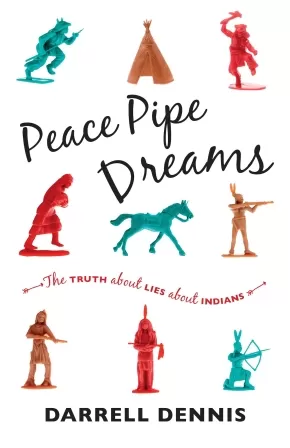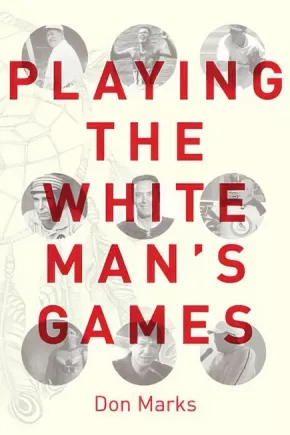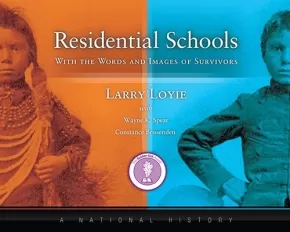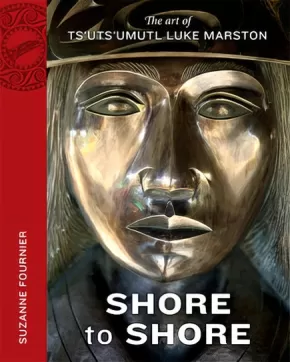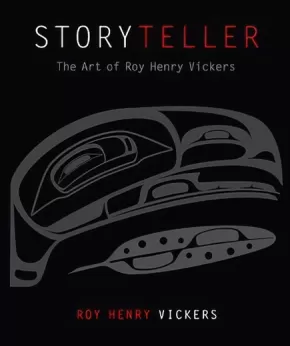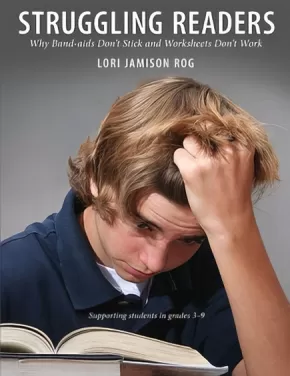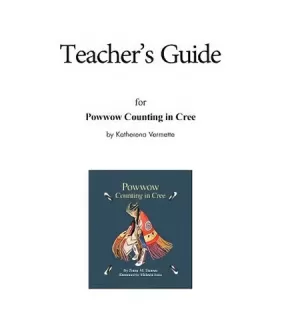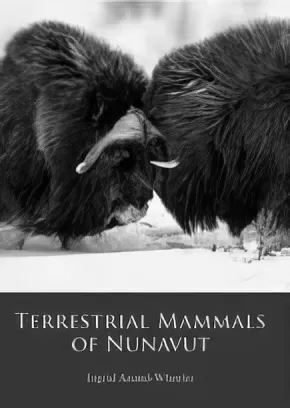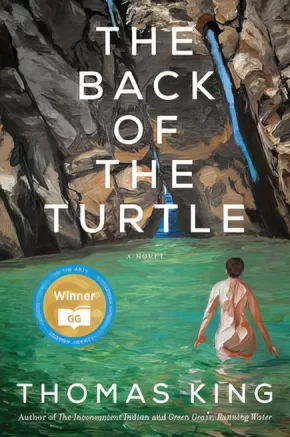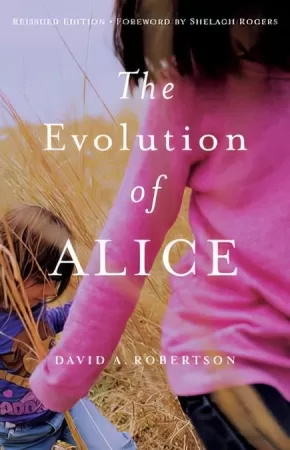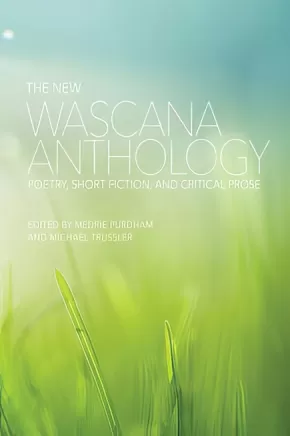
Browse Books for Adults
1561
-
1575
of
1940 Results;
Sort By
Go To
of 130
Peace Pipe Dreams
$22.95
Format:
Paperback
Text Content Territories:
Indigenous Canadian; Métis; Inuit; First Nations;
ISBN / Barcode: 9781771000406
Synopsis:
Synopsis:
In 2015-2016, Peace Pipe Dreams was the award recipient for First Nation Communities Read.
Darrell Dennis is a stereotype-busting, politically incorrect Native American/Aboriginal/Shuswap (Only he's allowed to call himself an "Indian." Maybe. Under some circumstances). With a large dose of humour and irreverence, he untangles some of the truths and myths about First Nations: Why do people think Natives get free trucks, and why didn't he ever get one? Why does the length of your hair determine whether you’re good or bad? By what ratio does the amount of rain in a year depend on the amount of cactus liquor you consume?
In addition to answering these burning questions, Dennis tackles some tougher subjects. He looks at European-Native interactions in North America from the moment of first contact, discussing the fur trade, treaty-signing and the implementation of residential schools. Addressing misconceptions still widely believed today, Dennis explains why Native people aren't genetically any more predisposed to become alcoholics than Caucasians; that Native religion doesn't consist of worshipping rocks, disappearing into thin air, or conversing with animals; and that tax exemptions are so limited and confusing that many people don't even bother.
Employing pop culture examples, personal anecdote and a cutting wit, Darrell Dennis deftly weaves history with current events to entertain, inform and provide a convincing, readable overview of First Nations issues and why they matter today.
Additional Information
224 pages | 5.65" x 8.52"
Playing the White Man's Games
$24.95
Text Content Territories:
Indigenous American; Native American;
Grade Levels: University/College;
ISBN / Barcode: 9781927922019
Synopsis:
Synopsis:
Playing the White Man's Games tells the extraordinary tales of Native American athletes who overcame tremendous obstacles to dominate the NFL, CFL, PGA, Olympic Games, NHL and professional wrestling. From ABC's "Athlete of the Century" Jim Thorpe, whose track and field career began when he surpassed his college varsity high jump team in street shoes and climaxed with gold medals in the decathlon and pentathlon at the 1912 Olympic Games, before moving on to dominate NCAA and NFL football, major league baseball and 22 sports in all, including a national championship in ballroom dancing. To Billy Mills, who improved his best time by an unheard of 50 seconds to win the 10,000-metre Olympic race in "the greatest upset in Olympic history." And Notah Begay III, a product of public courses and Navajo code talkers who won four PGA tournaments in his first two years on the pro golf tour. Sometimes referred to as the "forgotten American", the fascinating stories of these colourful characters will make you recall Native American heroes with wonder and awe, not only for their exploits on the field of play, but for their efforts to preserve and enhance native history, culture and lifestyle with pride and dignity away from the competition.
Additional Information
272 pages | 6.00" x 9.00"
Residential Schools, With the Words and Images of Survivors
$34.95
Format:
Hardcover
Text Content Territories:
Indigenous Canadian;
ISBN / Barcode: 9780993937101
Synopsis:
Synopsis:
Residential Schools, With the Words and Images of Survivors, A National History honours the survivors, the former students, who attended residential schools. Designed for the general reader this accessible, 112-page history offers a first-person perspective of the residential school system in Canada, as it shares the memories of more than 70 survivors from across Canada as well as 125 archival and contemporary images (65 black & white photographs, 51 colour, some never before published).
This essential volume written by award-winning author Larry Loyie (Cree), a survivor of St. Bernard Mission residential school in Grouard, AB, and co-authored by Constance Brissenden and Wayne K. Spear (Mohawk), reflects the ongoing commitment of this team to express the truths about residential school experiences and to honour the survivors whose voices are shared in this book.
Along with the voices, readers will be engaged by the evocative, archival photographs provided by the Shingwauk Residential Schools Centre with the assistance of curator Krista McCracken. The book begins with the moving introduction by Larry Loyie, and moves to seven chapters that explore the purpose of this school system; cultures and traditions; leaving home; life at school the half-day system; the dark side of the schools; friendship and laughter coping with a new life; changing world–the healing begins; and an afterword. A detailed, full colour map showing residential schools, timeline with key dates, glossary, and a helpful index (including names of survivors and schools) make this vital resource a must-have for secondary, college, and universities, libraries, and the general reader.
Reviews
"A broad and comprehensive review of the history of First Nations, Métis, and Inuit peoples in Canada told from the perspective of First Peoples in a very accessible way. Any educator, regardless of personal background or heritage, would find this timely resource very useful in any classroom." — Gary Fenn and Domenic Bellissimo, executive assistants, Ontario Secondary School Teachers’ Federation
"Written with a gentle hand, this book describes a history that few Canadians understand or even know about. From the first page, those in search of the truth are engaged in a journey of learning, as they come to understand the true battle of Aboriginal peoples to preserve their cultures and pride. This story is a true account of resiliency and human spirit." — Tracy Zweifel, executive director, Sagitawa Friendship Society, Alberta
Awards
- 2016 Winner of Golden Oak award in Ontario's Forest of Reading program
Educator Information
This must-have resource includes a detailed, full-colour map showing residential schools, a timeline with key dates, and a glossary.
Recommended for grades 7-12, but would still be useful for adults and college/university courses studying residential schools and Indigenous history.
This book has been evaluated and approved by ERAC (Educational Resource Acquisition Consortium, British Columbia).
Additional Information
112 pages | 10.43" x 8.26"
Sanaaq: An Inuit Novel
$24.95
Format:
Paperback
Text Content Territories:
Indigenous Canadian; Inuit;
Grade Levels: 12; University/College;
ISBN / Barcode: 9780887557484
Synopsis:
Synopsis:
Sanaaq is an intimate story of an Inuit family negotiating the changes brought into their community by the coming of the qallunaat, the white people, in the mid-nineteenth century. Composed in 48 episodes, it recounts the daily life of Sanaaq, a strong and outspoken young widow, her daughter Qumaq, and their small semi-nomadic community in northern Quebec. Here they live their lives hunting seal, repairing their kayak, and gathering mussels under blue sea ice before the tide comes in. These are ordinary extraordinary lives: marriages are made and unmade, children are born and named, violence appears in the form of a fearful husband or a hungry polar bear. Here the spirit world is alive and relations with non-humans are never taken lightly. And under it all, the growing intrusion of the qallunaat and the battle for souls between the Catholic and Anglican missionaries threatens to forever change the way of life of Sanaaq and her young family.
Caution: Contains some mature content.
Educator Information
“Sanaaq is an unpretentious collection of fictional vignettes depicting Inuit family life in the 1950s Canadian eastern arctic. The author wrote at the request of an anthropologist attempting to learn Inuktitut and seeking to understand the context of specific words and terms.
Additional Information
248 pages | 5.50" x 8.50"
Shore to Shore: The Art of Ts'uts'umutl Luke Marston
$26.95
Format:
Paperback
Text Content Territories:
Indigenous Canadian; First Nations; Salish; Coast Salish;
ISBN / Barcode: 9781550176704
Synopsis:
Synopsis:
Stanley Park, Vancouver, September 2014. A fourteen-foot bronze-cast cedar sculpture is being erected. Dignitaries from all levels of government are present, including leaders of the Coast Salish First Nations and representatives from Portugal's Azores Islands. Luke Marston, carver/artist, supervises as his three-year project is revealed to the world.
The sculpture--titled Shore to Shore--depicts Luke's great-great-grandparents, Portuguese Joe Silvey, one of BC's most colourful pioneers, and Kwatleematt (Lucy), a Sechelt First Nation matriarch and Silvey's second wife. Silvey and Kwatleematt are flanked by Khaltinaht, Silvey's first wife, a noblewoman from the Musqueam and Squamish First Nations. The trio are surrounded by the tools of Silvey's trade: seine nets, whaling harpoons, and the Pacific coast salmon that helped the family thrive in the early industries of BC. The sculpture references the multicultural relationships that are at the foundation of BC, while also showcasing the talents of one of Canada's finest contemporary First Nations carvers.
Combining interviews, research and creative non-fiction narration, author Suzanne Fournier recounts Marston's career, from his early beginnings carving totems for the public at the Royal BC Museum, to his study under Haida artist Robert Davidson and jewellery master Valentin Yotkov, to his visits to both his ancestral homes: Reid Island and the Portuguese Azores island of Pico--journeys which provided inspiration for the Shore to Shore statue.
Educator Information
Recommended in the Canadian Indigenous Books for Schools 2015/2016 resource list for grades 7 to 12 for comparative civilizations, English language arts, photography, social studies, and visual arts.
Additional Information
128 pages | 8.00" x 10.00"
Storyteller: The Art of Roy Henry Vickers
$49.95
Format:
Hardcover
Text Content Territories:
Indigenous Canadian; First Nations; Haida; Heiltsuk (Bella Bella); Tsimshian (Ts'msysen);
ISBN / Barcode: 9781550176407
Synopsis:
Synopsis:
Roy Henry Vickers is known around the world for his unique artistic style marked by clean lines, vivid colours and natural themes drawn from the rugged beauty of the west coast of British Columbia. Influenced by his Tsimshian, Haida, Heiltsuk and British heritage, Vickers unites the stylized forms of his aboriginal ancestry with the realism of European art, creating vibrant images that speak to a universal spirit. His limited edition prints can be found in homes, museums and galleries around the world and have been presented to royalty.
Storyteller collects a decade of prints and paintings by Roy Henry Vickers into one stunning volume, including 118 previously unpublished works, making this a much-anticipated addition to the libraries of admirers of Pacific Northwest art. A note from the artist accompanies each image, inviting the reader to a deeper understanding of both art and artist.
Additional Information
240 pages | 10.00" x 12.00"
Struggling Readers: Why Band-Aids Don't Stick and Worksheets Don't Work
$24.95
Format:
Paperback
ISBN / Barcode: 9781551382920
Synopsis:
Synopsis:
It is a troubling statistic that a quarter of the students in any grade are reading below grade level. The good news is that it's not too late, even in middle school, to provide the extra instruction that will get the majority of these students back on track.
The practical, classroom-tested reading instruction strategies in Struggling Readers are carefully chosen to be effective with students in Grades 3–9. More than band-aid solutions that focus on discrete skills that don’t transfer to real reading, this insightful book shows teachers how to give struggling readers what they really need: the opportunity to read texts they can and want to read; explicit instruction in long-term strategies they can use on their own; confidence in themselves as readers, writers, and thinkers.
This comprehensive resource is organized around the instructional needs of struggling readers:
- teaching and texts targeted to their needs
- the opportunity to read more
- explicit instruction and guided practice in comprehension strategies • building vocabulary and fluency
- the ability to read informational and functional texts
- using writing to make sense of reading
The lesson routines are specifically designed for small-group work, but are adaptable to whole-class or individualized learning.
Struggling Readers is a valuable resource that will help teachers use guided reading strategies from the early grades to reach those students still struggling with reading basics.
Tales From Big Spirit Series Teacher's Guide
$29.00
Format:
Coil Bound
Text Content Territories:
Indigenous Canadian;
Grade Levels: University/College;
ISBN / Barcode: 9781553795261
Synopsis:
Synopsis:
This teacher’s guide is designed to help classroom teachers use the graphic novel series, Tales From Big Spirit, by David A. Robertson. The guide provides detailed lessons that meet a wide range of language arts and social studies goals, integrate Indigenous perspectives, and make curricular content more accessible to diverse learners. It is organized into three sections.
The first section includes:
- general instructional ideas for deepening readers’ comprehension of text.
- a framework to further develop students’ thinking about history.
- information about aspects of graphic novels and how to use them in the classroom.
The second section includes:
- specific instructional ideas and suggestions.
- an overview.
- detailed teaching and learning sequences (before-, during-, and after-reading format).
The appendix includes:
- strategies and reproducible classroom materials that support and stimulate student learning.
- historical images that may be reproduced.
Additional Information
74 pages | 8.50" x 11.00"
Teacher's Guide: Powwow Counting in Cree
$10.99
Format:
Paperback
Text Content Territories:
Indigenous Canadian; First Nations; Cree (Nehiyawak);
ISBN / Barcode: 9781553795087
Synopsis:
Synopsis:
Teacher’s Guide for Powwow Counting in Cree gives you engaging activities that take a deeper look at each illustration in the book, Powwow Counting in Cree. In this resource you will find:
- background information that addresses specific topics related to Cree culture and language
- detailed, easy-to-follow lesson plans for social studies, language arts, mathematics, and other content areas
- additional sources of information about Cree language and culture
- and much more.
Additional Information
28 pages | 8.00" x 9.00"
Terrestrial Mammals of Nunavut (6 in Stock)
$19.95
Format:
Hardcover
ISBN / Barcode: 9781927095744
Synopsis:
Synopsis:
Explore the fascinating world of Nunavut's diverse terrestrial mammal populations in this richly visual, informative book.
Through beautiful photographs and a broad range of information, readers will learn about the appearances, ranges, and behaviours of eastern Arctic non-marine mammals. With detailed information on more than thirty species, this book provides an in-depth look at Arctic terrestrial mammals.
Far from a barren land of ice and snow, this book will introduce readers to the vibrant natural life of Nunavut through its distinct mammalogy.
The Back Of The Turtle
$22.99
Format:
Paperback
Text Content Territories:
Indigenous Canadian;
ISBN / Barcode: 9781443431637
Synopsis:
Synopsis:
This is Thomas King’s first literary novel in fifteen years and follows on the success of the award-winning and bestselling The Inconvenient Indian and his beloved Green Grass, Running Water and Truth and Bright Water, both of which continue to be taught in Canadian schools and universities. Green Grass, Running Water is widely considered a contemporary Canadian classic.
In The Back of the Turtle, Gabriel returns to Smoke River, the reserve where his mother grew up and to which she returned with Gabriel’s sister. The reserve is deserted after an environmental disaster killed the population, including Gabriel’s family and the local wildlife. Gabriel, a brilliant scientist working for Domidion, created GreenSweep and indirectly led to the crisis. Now he has come to see the damage and to kill himself in the sea. But as he prepares to let the water take him, he sees a young girl in the waves. Plunging in, he saves her and soon is saving others. Who are these people with their long black hair and almond eyes who have fallen from the sky?
Filled with brilliant characters, trademark wit, wordplay and a thorough knowledge of native myth and storytelling, this novel is a masterpiece by one of our most important writers.
Reviews
“Gracefully written, this is a fable-like morality tale. With King’s trademark flashes of humour, irony and deadpan delivery, The Back of the Turtle is populated with wounded characters who are trying to heal in the wake of an environmental disaster.” — Toronto Star
“King’s writing is sharp, the characters are well-drawn, and his topic is suitably grave.” — National Post
"King deftly juxtaposes the varieties of Canadian experience, contrasting the shining city with diminishing coastal town, the lives of the uber-wealthy with those of aboriginal Canadians, whose lives seem to count for very little when there is a profit to be made. King uses his trademark blending of traditional aboriginal beliefs and stories with the Western literary canon to create a haunting narrative of life, death and the destruction of nature. Allusions abound, incorporated into the story with King's often absurdist wit, walking a fine line between humor and heartbreak. The result is both an intimate story of grief in the face of loved ones lost and a searing criticism of current apathy toward looming environmental disasters." - Publisher's Weekly
Educator Information
Grades 11-12 English First Peoples resource for the unit "You Want Me to Write a What?" - The Literary Essay.
Additional Information
528 pages | 5.31" x 8.00"
The Digital Principal: How to Encourage a Technology-Rich Environment (1 in Stock)
$24.95
Format:
Paperback
ISBN / Barcode: 9781551382883
Synopsis:
Synopsis:
Although education leaders do not have to be digital experts, they need to recognize the importance of supporting learning communities that embrace technological innovation, engaging students and building on their experiences. The Digital Principal shows education leaders how to apply their leadership skills to the challenge of creating and supporting a learning environment rich in technology and opportunities for both students and teachers to work, teach, and learn in the digital age. From the basics of digital literacy and good citizenship, to connecting to the digital community and accessing digital and virtual worlds, this book establishes a framework for integrating technology into instruction and learning. This timely book describes effective methods leaders and administrators can really use to provide visionary leadership in the digital age.
The Evolution of Alice - 2nd Edition
$19.95
Format:
Paperback
Text Content Territories:
Indigenous Canadian;
ISBN / Barcode: 9781553799177
Synopsis:
Synopsis:
This haunting, emotionally resonant story delivers us into the world of Alice, a single mother raising her three young daughters on the rez where she grew up. Alice has never had an easy life, but has managed to get by with the support of her best friend, Gideon, and her family. When an unthinkable loss occurs, Alice is forced onto a different path, one that will challenge her belief in herself and the world she thought she knew. The Evolution of Alice is the kaleidoscopic story of one woman’s place within the web of community. Peopled with unforgettable characters and told from multiple points of view, this is a novel where spirits are alive, forgiveness is possible, and love is the only thing that matters.
Reviews
"So many Manitobans have, like a character in an early chapter, only sped by reserves on the highway. Inviting us into a rich community of characters, which stretches deeper than the headlines most of us associate with reserve life, Robertson is doing a service to everyone who calls Manitoba home. And crafting an engaging story of one family’s recovery from loss — at a time when indigenous peoples are increasingly flexing political, economic and cultural muscle in this country — is a gift for everyone hoping for a better future for our divided country…" - Matthew TenBruggencate, CTV Winnipeg
"Pulsing at the heart of this novel are the warmly rendered inflections of storytelling voices like Gideon’s, at once reflective, vivid, and vernacular. And at the novel’s core, the broken but ultimately healing rhythms of Alice’s 'evolution' – her cycles of loving and suffering, of her family’s living, dying, and ultimately hoping to live anew — bring contemporary experience on the reservation and in the big city achingly, joyfully, and always pungently alive." - Neil Besner, Professor of English, Provost and Vice-President, Academic, The University of Winnipeg
Educator Information
Grades 10-12 English First Peoples.
This 2nd edition has been reissued with a new story by David A. Robertson and foreword by Shelagh Rogers.
Additional Information
216 pages | 5.50" x 8.50" | 2nd Edition
The New Wascana Anthology: Poetry, Short Fiction, and Critical Prose
$49.50
Editors:
Format:
Paperback
Text Content Territories:
Indigenous Canadian;
ISBN / Barcode: 9780889773080
Synopsis:
Synopsis:
The New Wascana Anthology is named for the Cree word "oskana," meaning "bones,"* but this anthology is no literary graveyard. It will introduce you to stories, poems, and essays that can be discussed over drinks, or used to impress friends years after leaving English 100 behind.
Offering a taster's choice of the best Canadian writing, with a special focus on Aboriginal and Prairie writers, this anthology includes pieces selected to introduce you to the English literary canon. Going back hundreds of years, the oldest poems included here have no known author, while the youngest writer is a recent university graduate.
Building on the bones of the canon (including all of Canada's Man Booker Prize-winners and newest Nobel Laureate), The New Wascana Anthology features writers such as Flannery O'Connor, Thomas King, Carmine Starnino, and Ursula K. Le Guin who will challenge your worldview. Most importantly, this anthology is about turning the page, opening your mind, and revelling in the pleasures of reading.
*The bones referred to are the bones of plains bison, a species that once numbered in the tens of millions on the Great Plains.
Educator Information
Contains works from Indigenous and non-Indigenous writers.
Table of Contents
Preface
Poetry
Anonymous
Summer is icumen in
Sir Patrick Spens
Mary Hamilton
Geoffrey Chaucer (ca. 1343–1400)
from The Canterbury Tales
Excerpts from General Prologue
Sir Thomas Wyatt (1503–1542)
The Long Love, That in My Thought Doth Harbour
Sir Walter Ralegh (ca. 1552–1618)
The Nymph’s Reply to the Shepherd
Edmund Spenser (ca. 1552–1599)
from Amoretti
30. My love is like to ice
75. One day I wrote her name
Sir Philip Sidney (1554–1586)
from Astrophel and Stella
59. Dear, why make you more of a dog than me?
Michael Drayton (1563–1631)
from Idea
61. Since there’s no help, come let us kiss and part
Christopher Marlowe (1564–1593)
The Passionate Shepherd to His Love
William Shakespeare (1564–1616)
from Sonnets
18. Shall I compare thee to a summer’s day?
20. A woman’s face, with nature’s own hand painted
116. Let me not to the marriage of true minds
130. My mistress’ eyes are nothing like the sun
from As You Like It
All the world’s a stage
John Donne (1572–1631)
A Valediction: Forbidding Mourning
Death be not proud
The Bait
The Flea
Ben Jonson (1572–1637)
Epigram XXII: On My First Daughter
Epigram XLV: On My First Son
Song: To Celia
George Herbert (1593–1633)
Love (III)
John Milton (1608–1674)
When I Consider How My Light Is Spent
from Paradise Lost, Book 1
The Invocation
Anne Bradstreet (1612–1672)
Before the Birth of One of Her Children
The Author to Her Book
Andrew Marvell (1621–1678)
To His Coy Mistress
Anne Finch, Countess of Winchelsea (1661–1720)
To the Nightingale
A Letter to Daphnis, April 2, 1685
Alexander Pope (1688–1744)
The Rape of the Lock
Lady Mary Wortley Montagu (1689–1762)
Addressed to—
Thomas Gray (1716–1771)
Elegy Written in a Country Churchyard
Christopher Smart (1722–1771)
from Jubilate Agno
My Cat Jeoffry
William Blake (1757–1827)
from Songs of Innocence
The Chimney Sweeper
The Lamb
from Songs of Experience
A Poison Tree
London
The Chimney Sweeper
William Wordsworth (1770–1850)
A slumber did my spirit seal
Composed Upon Westminster Bridge, September 3, 1802
I wandered lonely as a cloud
The world is too much with us
Samuel Taylor Coleridge (1772–1834)
Kubla Khan
George Gordon, Lord Byron (1788–1824)
She Walks in Beauty
The Destruction of Sennacherib
Percy Bysshe Shelley (1792–1822)
Ozymandias
John Keats (1795–1821)
La Belle Dame Sans Merci
When I have fears that I may cease to be
Alfred, Lord Tennyson (1809–1892)
Ulysses
Robert Browning (1812–1889)
Porphyria’s Lover
My Last Duchess
Emily Brontë (1818–1848)
Remembrance
Walt Whitman (1819–1892)
When Lilacs Last in the Dooryard Bloom’d
Matthew Arnold (1822–1888)
Dover Beach
George Meredith (1828–1909)
from Modern Love
17. At dinner, she is hostess, I am host
Emily Dickinson (1830–1866)
F479. Because I could not stop for Death
F591. I heard a Fly buzz—when I died
F620. Much Madness is divinest Sense
F1096. A narrow Fellow in the Grass
F1263. Tell all the Truth but tell it slant
Lewis Carroll (1832–1898)
Jabberwocky
Thomas Hardy (1840–1928)
The Ruined Maid
The Convergence of the Twain
The Workbox
Gerard Manley Hopkins (1844–1889)
God’s Grandeur
Pied Beauty
The Windhover
A. E. Housman (1859–1936)
from A Shropshire Lad
XIX. To An Athlete Dying Young
Sir Charles G. D. Roberts (1860–1943)
Tantramar Revisited
Archibald Lampman (1861–1899)
Heat
William Butler Yeats (1865–1939)
The Second Coming
Leda and the Swan
Crazy Jane Talks with the Bishop
Edwin Arlington Robinson (1869–1935)
Miniver Cheevy
Robert Frost (1874–1963)
After Apple-Picking
Mending Wall
Nothing Gold Can Stay
The Silken Tent
William Carlos Williams (1883–1963)
The Red Wheelbarrow
This is Just to Say
Pictures from Brueghel
D. H. Lawrence (1885–1930)
Piano
Snake
Ezra Pound (1885–1972)
In a Station of the Metro
The River Merchant’s Wife: A Letter
Isaac Rosenberg (1890–1918)
Break of Day in the Trenches
Edna St. Vincent Millay (1892–1950)
Elegy before Death
What lips my lips have kissed
Wilfred Owen (1893–1918)
Dulce et Decorum Est
e.e. cummings (1894–1963)
“next to of course god america i
anyone lived in a pretty how town
F. R. Scott (1899–1985)
Lakeshore
Langston Hughes (1902–1967)
The Negro Speaks of Rivers
Harlem
A. J. M. Smith (1902–1980)
The Lonely Land
Far West
Stevie Smith (1902–1971)
Not Waving but Drowning
Earle Birney (1904–1995)
Anglo-Saxon Street
W. H. Auden (1907–1973)
Musée des Beaux-Arts
Theodore Roethke (1908–1963)
My Papa’s Waltz
A. M. Klein (1909–1972)
Heirloom
The Rocking Chair
Dorothy Livesay (1909–1996)
Green Rain
Elizabeth Bishop (1911–1979)
In the Waiting Room
Irving Layton (1912–2006)
The Birth of Tragedy
Dylan Thomas (1914–1953)
Fern Hill
Do Not Go Gentle into That Good Night
P. K. Page (1916–2010)
After Rain
Planet Earth
Robert Lowell (1917–1977)
For the Union Dead
Miriam Waddington (1917–2004)
Advice to the Young
Raymond Souster (1921–2012)
The Lilac Poem
Elizabeth Brewster (1922–2012)
The Night Grandma Died
Eli Mandel (1922–1992)
Houdini
Anne Szumigalski (1926–1999)
It Wasn’t a Major Operation
Don Coles (b. 1927)
Collecting Pictures
Robert Kroetsch (1927–2011)
Meditation on Tom Thomson
Rita Joe (1932–2007)
Axe Handles for Sale
I Lost My Talk
Sylvia Plath (1932–1963)
Daddy
Alden Nowlan (1933–1983)
The Bull Moose
Leonard Cohen (b. 1934)
A Kite Is a Victim
Suzanne
Robert Currie (b. 1937)
Young Boy, Fleeing
Glen Sorestad (b. 1937)
Ten Years
Now That I’m Up
John Newlove (1938–2003)
The Double-Headed Snake
Margaret Atwood (b. 1939)
Backdrop Addresses Cowboy
The Nature of Gothic
This Is a Photograph of Me
Seamus Heaney (1939–2013)
Bog Queen
Digging
The Names of the Hare
Patrick Lane (b. 1939)
Mountain Oysters
Gary Hyland (1940–2011)
from Arguments in the Garden of Prayer
1. So many frogs
14. The first sounds
Beth Brant (b. 1941)
for all my Grandmothers
Robert Hass (b. 1941)
Consciousness
Gwendolyn MacEwen (1941–1987)
Manzini: Escape Artist
Marie Annharte Baker (b. 1942)
Pretty Tough Skin Woman
Louise Glück (b. 1943)
Illuminations
Michael Ondaatje (b. 1943)
The Cinnamon Peeler
White Dwarfs
Dennis Cooley (b. 1944)
how there in the plaid light she played with his affections plied them spikes from his heart she stood by pliers in hand he has his pride
Craig Raine (b. 1944)
A Martian Sends a Postcard Home
Tom Wayman (b. 1945)
Did I Miss Anything?
Linda Hogan (b. 1947)
Cities Behind Glass
Lorna Crozier (b. 1948)
The Dirty Thirties
Poem about Nothing
from The Sex Lives of Vegetables
Radishes
Lettuce
Cauliflower
Beth Cuthand (b. 1949)
Four Songs for the Fifth Generation
Kathleen Wall (b. 1950)
Morning Nocturne
Joy Harjo (b. 1951)
She Had Some Horses
Gerald Hill (b. 1951)
Becoming and Going: An Oldsmobile Story
Di Brandt (b. 1952)
completely seduced
Louise Halfe (b. 1953)
She Told Me
Louise Erdrich (b. 1954)
Dear John Wayne
Indian Boarding School: The Runaways
Jacklight
Jeanette Lynes (b. 1956)
The Last Interview with Bettie Page
Anne Simpson (b. 1956)
Grammar Exercise
George Elliott Clarke (b. 1960)
Blank Sonnet
Michael Crummey (b. 1965)
Her Mark
Gregory Scofield (b. 1966)
His Flute, My Ears
Karen Solie (b. 1966)
Parasitology
Randy Lundy (b. 1967)
Bear
Ghost Dance
Stephanie Bolster (b. 1969)
To Dolly
Carmine Starnino (b. 1970)
Pepino’s Poem, “Growing Up in Naples”
Rope Husbandry
Daniel Scott Tysdal (b. 1978)
Metro
Cassidy McFadzean (b. 1989)
I smile earwide
Short Fiction
Sherman Alexie (b. 1966)
The Approximate Size of My Favourite Tumour
Margaret Atwood (b. 1939)
My Last Duchess
Sandra Birdsell (b. 1942)
Disappearances
Raymond Carver (1938–1988)
Cathedral
William Faulkner (1897–1962)
A Rose for Emily
Richard Ford (b. 1944)
Sweethearts
Charlotte Perkins Gilman (1860–1935)
The Yellow Wall-paper
James Joyce (1882–1941)
Araby
Thomas King (b. 1943)
A Seat in the Garden
Ursula K. Le Guin (b. 1929)
The Ones Who Walk Away from Omelas
Alexander MacLeod (b. 1972)
Miracle Mile
Alistair MacLeod (1936-2014)
The Boat
Katherine Mansfield (1888–1923)
The Garden-Party
Yann Martel (b. 1963)
The Facts Behind the Helsinki Roccamatios
Rohinton Mistry (b. 1952)
Swimming Lessons
Ken Mitchell (b. 1940)
The Great Electrical Revolution
Alice Munro (b. 1931)
The Bear Came over the Mountain
Flannery O’Connor (1925–1964)
A Good Man Is Hard to Find
Edgar Allan Poe (1809–1849)
The Cask of Amontillado
Eden Robinson (b. 1968)
Traplines
Gloria Sawai (1932–2011)
The Day I Sat with Jesus on the Sundeck and a Wind Came Up and Blew My Kimono Open and He Saw My Breasts
Guy Vanderhaeghe (b. 1951)
Dancing Bear
Dianne Warren (b. 1950)
Bone Garden
Critical Prose
Stephen Jay Gould (1941–2002)
Evolution as Fact and Theory
Trevor Herriot (b. 1958)
from Grass, Sky, Song: Promise and Peril in the World of Grassland Birds
A Way Home
Barbara Kingsolver (b. 1955)
Setting Free the Crabs
Don McKay (b. 1942)
Baler Twine: Thoughts on Ravens, Home, and Nature Poetry
Jonathan Swift (1667–1745)
A Modest Proposal
Copyright Notices
Index of Authors and Titles
Index of First Lines of Poetry
Additional Information
554 pages | 6.00" x 9.00" | Paperback
Tracking the Past Through Legends & Stories
$14.95
Format:
Paperback
Text Content Territories:
Indigenous Canadian; First Nations; Anishinaabeg;
Grade Levels: University/College;
Synopsis:
Compiled by Craig Charbonneau Fontaine, these stories by Elder Alexander Grisdale were first printed in the Winnipeg Free Press in the 1960s. The collection demonstrates the traditional narrative of Anishanabe storytelling, in written form, and illustrates how the land we know as Canada carries stories and experiences that predate European colonization.
Sort By
Go To
of 130

